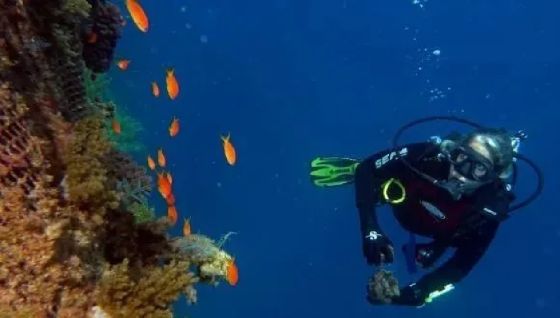
How Can We Boost Our Fight Against Marine Plastic Pollution?
TAU researchers say global standardization must be established.
Plastic wastes endanger marine life in many ways: animals get entangled in large plastic items or swallow small particles and chemicals, consequently dying of suffocation, starvation or poisoning. Awareness is growing, and research is expanding, but the effort to monitor and prevent plastic pollution encounters many obstacles, first of all due to the enormous complexity and diversity of plastic debris.
A new review from Tel Aviv University has determined that global standardization of methodologies for monitoring and measuring marine plastic pollution can significantly boost international efforts to mitigate this troubling phenomenon. In a comprehensive survey of all methods described in existing literature, the researchers charted the great complexity and diversity of marine plastic pollution, which makes unified measurement and accurate evaluation very difficult. According to the researchers, this is precisely why a standardized system is urgently needed, enabling comparisons, exchange of information, and effective tools for decisionmakers.
Grave and Immediate Threat
The study was led by Gal Vered and Prof. Noa Shenkar of the School of Zoology at The George S. Wise Faculty of Life Sciences and The Steinhardt Museum of Natural History at Tel Aviv University. Gal Vered is also a researcher at the Interuniversity Institute for Marine Sciences in Eilat. The review was published in Current Opinion in Toxicology.
According to Prof. Shenkar, plastic pollution, which is all human-made, poses a grave and immediate threat to the marine environment, with constantly rising amounts of plastic entering the oceans. Thus, for example, a 2013 survey conducted by Israel’s Ministry of Environmental Protection found that plastic accounts for about 41% of the volume of waste produced annually by Israelis. The Covid-19 pandemic, which has generated extreme demands for personal protective and single-use products, has further exacerbated the problem.
Comes in Different Shapes and Forms
The researchers explain that marine plastic pollution comprises many different types of plastic and plastic products of various shapes and sizes – from huge ghost nets to nanoparticles, as well as a vast range of chemical additives. Different methods for monitoring, sampling, and identifying plastic pollution relate to different properties of the sampled material: from size, source, and original use, through shape and color, to chemical composition and physical properties. Sampling is usually conducted with a towed net, with the size of collected pollutants dependent on the net’s mesh size, and tiny particles are identified in the lab using various spectroscopic and chemical methods. In addition to the diversity in sampling and identification methods, units used for reporting measured concentrations of pollutants also vary: from the number of plastic objects per area, to the weight of particles per organism, and more.
“These differences generate confusion and lack of communication among researchers in different parts of the world, hampering our efforts to work together toward our common goal: providing decision makers with reliable data in order to promote the efforts to reduce plastic pollution and its many hazards,” explains Prof. Shenkar. “We are in urgent need of standardized methods and comparable measures for monitoring, sampling, identifying, classifying, and quantifying marine plastic pollution and its impact.”
International Collaboration Needed
“This study is a response to problems encountered in my research, which deals with the impact of plastic and its chemical additives on marine life in the Eilat coral reef (presenting Israel’s largest marine biodiversity),” says Gal Vered and explains: “The differences in methodology make it difficult to use the findings of other researchers – as either a source of information or for comparing results. Thus, for example, most measurements worldwide relate to samples obtained with a towed net from the surface of the water, while I wish to discover which materials reach the seafloor and reef organisms.”
“Standardization will enable accurate evaluations and valid comparisons between plastic pollutions in different places on the globe. This will maximize the power of scientific research, enhance our understanding of the impact of plastic pollution on ecosystems and marine life, and help us develop effective tools for decisionmakers facing this crucial issue.”
Prof. Shenkar concludes: “Marine plastic pollution is a global problem, which requires extensive international collaboration. At the bottom line, we all wish to focus our efforts and obtain the best results. Like many others, we believe that efforts should begin close to the shoreline, in areas directly impacted by plastic pollution. However, a great deal of research is still required in order to establish this assumption and build effective strategies for managing plastic pollution. But first of all, we urgently need standardization that will enable all of us, all over the world, to work together.”
Featured image: Prof. Noa Shenkar
